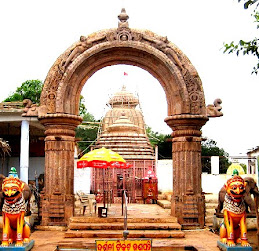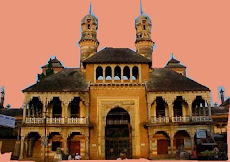The new Revenue Divisional Commissioner (RDC) of Southern Division, Odisha, Shri Laxmi Narayan Nayak has taken over the charge of new chairmanship of the Tara Tarini Development Board (TTDB), on March 16. The Board is considered as one of the prominent temple administrative bodies of Odisha after the Jagannath Temple administration, Puri.
 The prehistoric Tara Tarini hill shrine is believed to be the Sthana Peetha (Breast Shrine) of Adi Shakti and as one amongst the four major ancient Shakti shrines in India. TTDB was formed in the year 2003 for the development of the hill shrine. After the formation of TTDB the shrine got the much needed attention along with infrastructure. As per the convention of the Board, Shri Nayak who has recently joined as the new RDC, Southern Division has taken over charges from the outgoing RDC and the Chairman of TTDB Shri Chandra Sekhar Kumar. On this occasion the TTDB office bearers, members and the temple administration while congratulating Shri Nayak expressed the hope that the Hill Shrine will become a great center of religious and tourist importance like Mata Vaishno Devi Shrine in Jammu & Kashmir and Tirupati in Andhra Pradesh under his chairmanship.
The prehistoric Tara Tarini hill shrine is believed to be the Sthana Peetha (Breast Shrine) of Adi Shakti and as one amongst the four major ancient Shakti shrines in India. TTDB was formed in the year 2003 for the development of the hill shrine. After the formation of TTDB the shrine got the much needed attention along with infrastructure. As per the convention of the Board, Shri Nayak who has recently joined as the new RDC, Southern Division has taken over charges from the outgoing RDC and the Chairman of TTDB Shri Chandra Sekhar Kumar. On this occasion the TTDB office bearers, members and the temple administration while congratulating Shri Nayak expressed the hope that the Hill Shrine will become a great center of religious and tourist importance like Mata Vaishno Devi Shrine in Jammu & Kashmir and Tirupati in Andhra Pradesh under his chairmanship.After taking over the charge Shri Nayak visited the holy shrine and discussed the status of the 2nd phase of work, which is going on in full pace. Board secretary, Executive officer TTDB and other Board Members tabled the draft of the 2nd phase of work. It was agreed that the Board would ensure the completion of the ongoing projects like the widening of Ghat road and unfinished first phase work of the main temple complex before the commencement of the forthcoming Chaitra Mela, which was visited by more than 20 lakh devotees last year during the month of Chaitra.
It is worth mentioning that the second phase work of the temple which is presently underway includes the following projects;
- Construction of, four side-temples, boundary wall and outer protection wall / river side retaining wall to check land sliding and soil erosion at the hilltop.
- Construction of administrative office, Mundan shade and Bhog Bazaar on the hilltop.
- Construction of a big public utilities complex.
- Construction of waiting hall for the Rope-way on the hilltop.
- Further development of Arial Rope-way.
- Construction of huge parking space at the hilltop.
- Flood lighting arrangements at the hilltop and inside the temple premises. Lighting arrangement on the 999 holy stone steps and road leading to the Hilltop from Tara Tarini junction.
- Further widening of stone steps and ghat road leading to the hill top.
- Maintenance of eco-system in and around the sacred hill by huge plantation in its nearby areas.
- Construction of a hospital, a residential school and training centre for the physically challenged etc.
In the mean time the traditional ritualistic inaugural ceremony of the new temple of Tara Tarini hill shrine which was scheduled to be held on March 03 -09, has been deferred. The new chairman of TTDB in consultation with the Vedic pundits will decide the new date for this ceremony on 24th March. Decision to defer the inauguration ceremony was taken at a meeting of Vedic pundits. Twelve senior Vedic pundits from all the nine traditional taluks of Ganjam district have been invited to the March 24th meeting convened by the TTDB. Among others, TTDB Vice President and Ganjam Collector, office bearers, members of the technical committee, members of TTDB and senior officials of government of Odisha and district administration will participate. In this meeting the new Chairman will also review the progress of on-going works, including the dedicated bus service to the hill shrine from Berhampur city and other towns of the district, construction of a bus Stand on the foot hill, permanent accommodation facility for the visitors on the foot hill and about the decision of the Ministry of Law govt. of Orissa to recover all the donated cultivated and uncultivated land (Around 600 acres of land in various parts of the state) on the lines of Jagannath Temple, Puri.

























